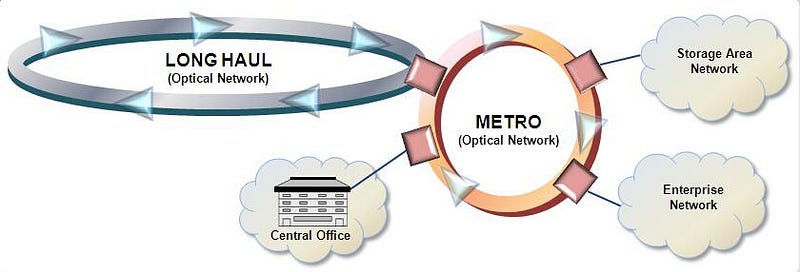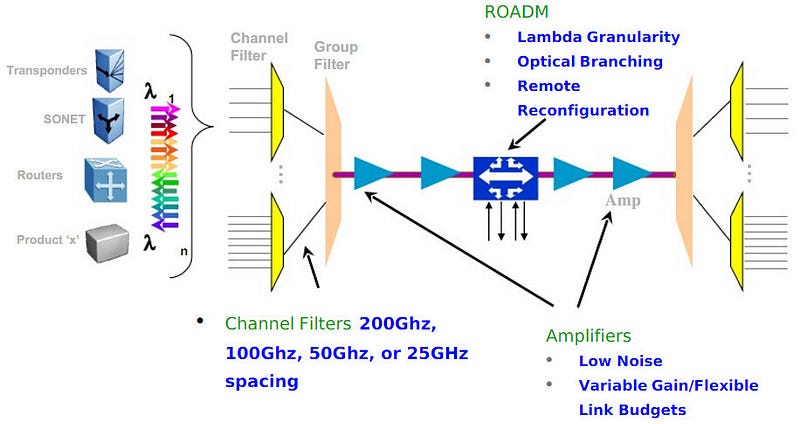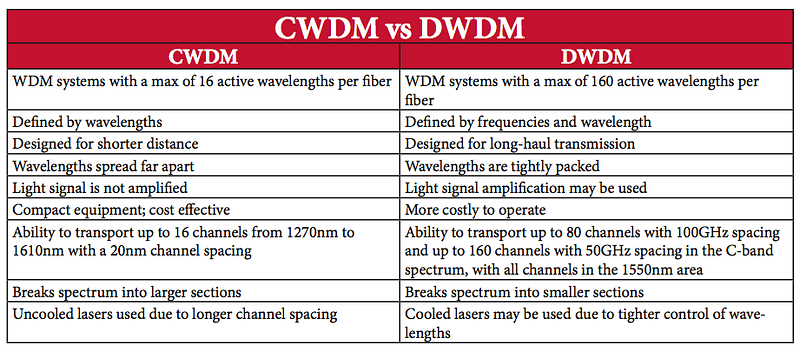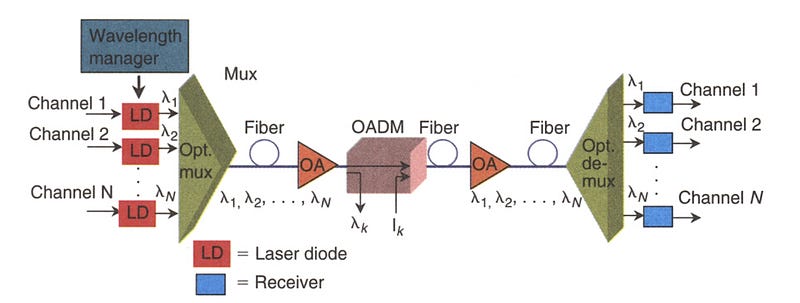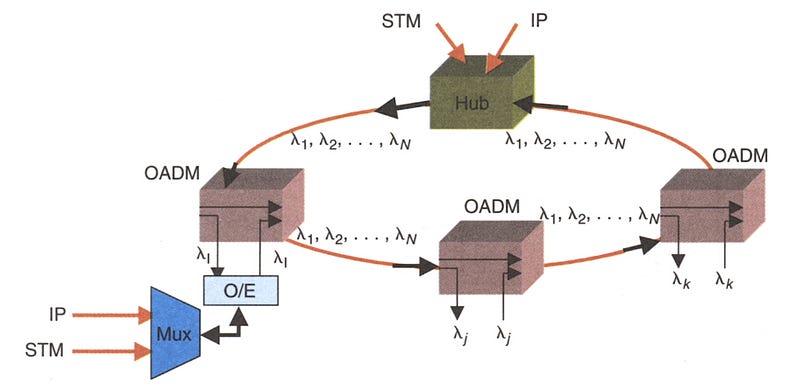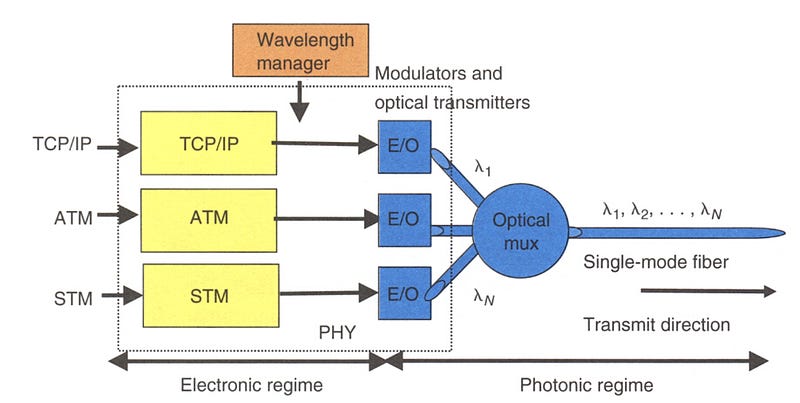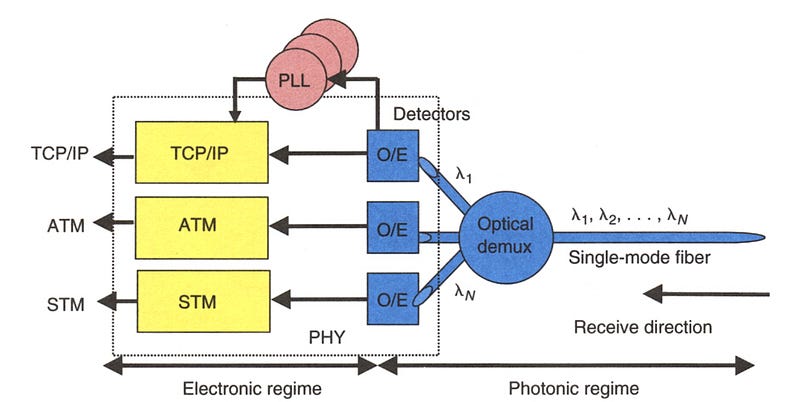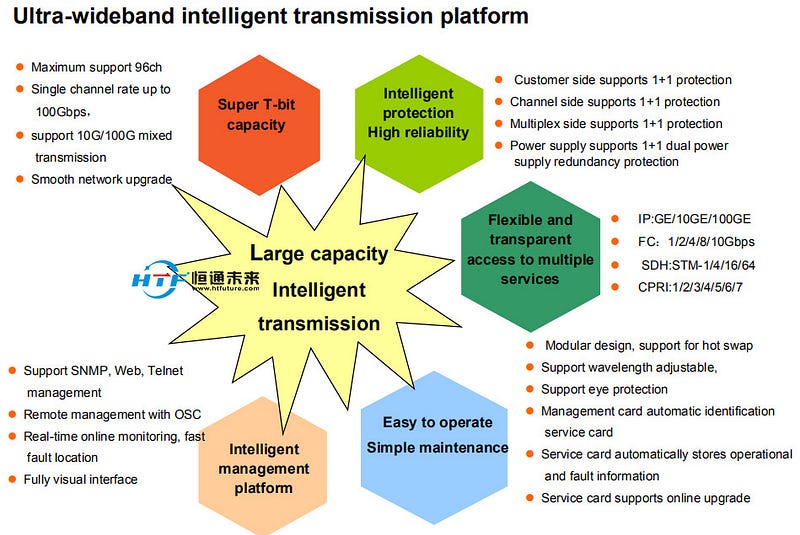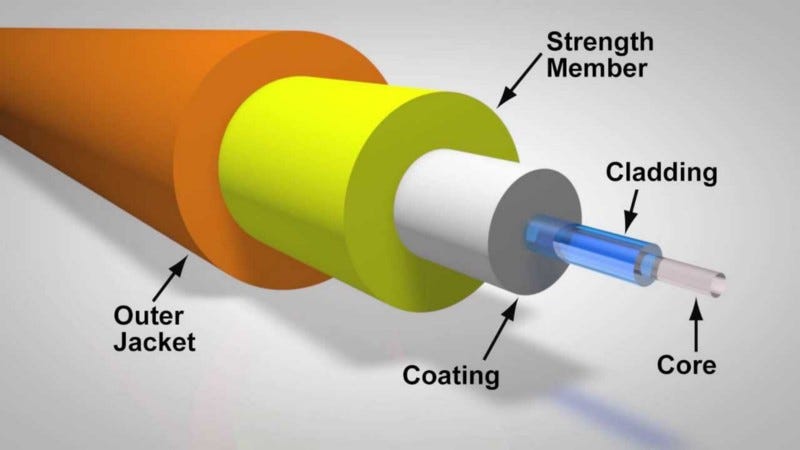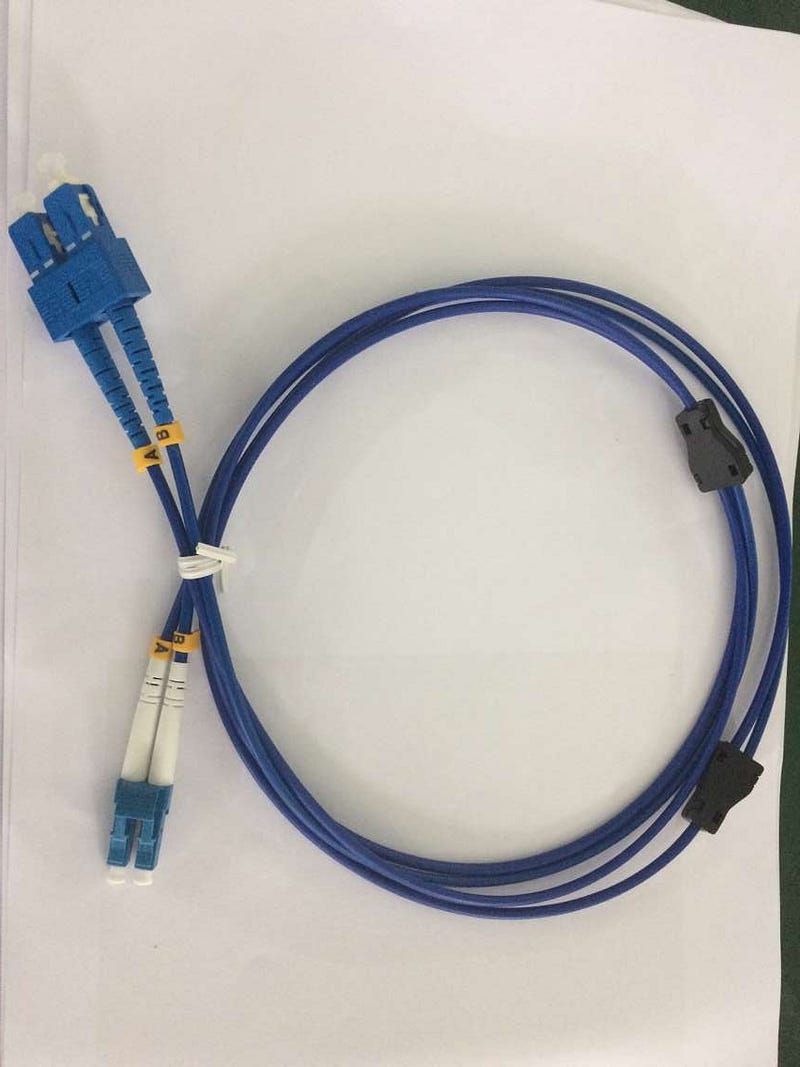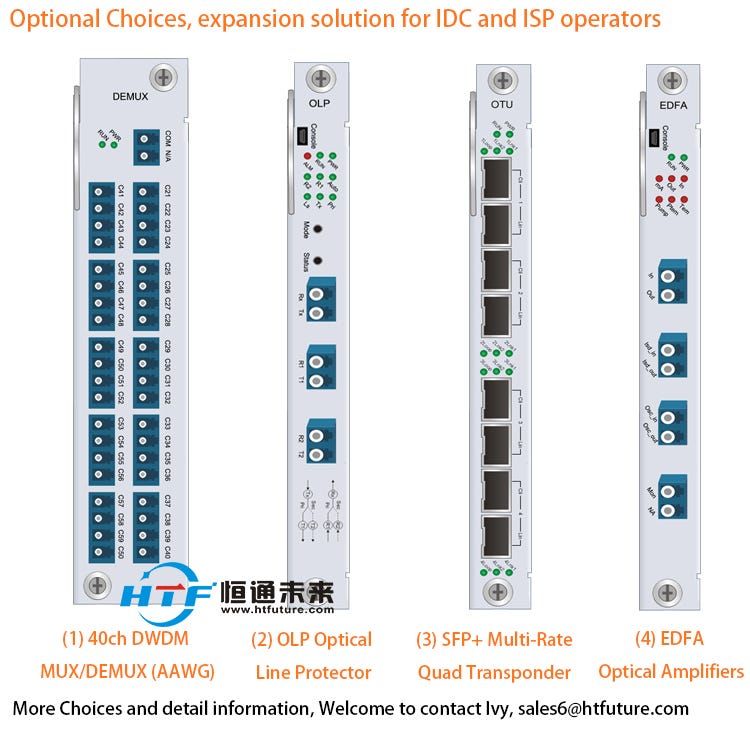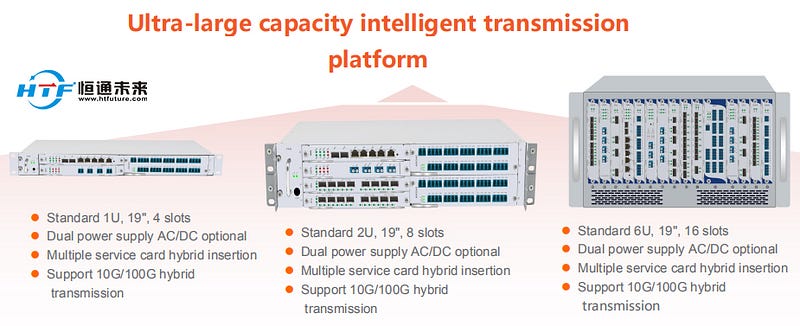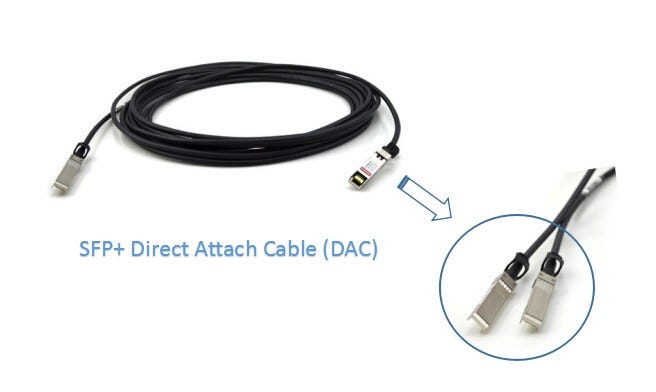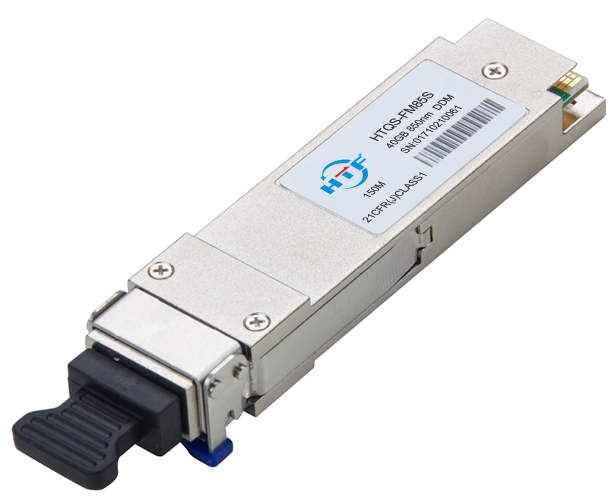“OM” stand for optical multi-mode, which is a standard for multi-mode fiber representation of fiber grade. The bandwidth and maximum distance of different levels of transmission are different, and the differences between them are analyzed from the following aspects.
First. Comparison of parameters and specifications of OM1, OM2, OM3 and OM4 fibers
1. OM1 refers to a 50um or 62.5um core-diameter multimode fiber with a full injection bandwidth of 200/500MHz.km at 850/1300nm;
2. OM2 refers to a 50um or 62.5um core-diameter multimode fiber with a full injection bandwidth of 500/500MHz.km at 850/1300nm;
3. OM3 is a 850nm laser-optimized 50um core-diameter multimode fiber. In 10Gb/s Ethernet with 850nm VCSEL, the fiber transmission distance can reach 300m.
4. OM4 is an upgraded version of OM3 multimode fiber, and the fiber transmission distance can reach 550m.
OM1 OM2 OM3 OM4 Cable

Second, the design comparison of OM1, OM2, OM3 and OM4 fiber
1. The traditional OM1 and OM2 multimode optical fibers are based on LED (Light Emitting Diode) as the basis light source, and OM3 and OM4 are optimized on the basis of OM2, making them suitable for light source. For the transmission of LD (Laser Diode laser diode);
2. Compared with OM1 and OM2, OM3 has higher transmission rate and bandwidth, so it is called optimized multimode fiber or 10G multimode fiber;
3. OM4 is re-optimized on the basis of OM3, with better performance.
Third, the function and characteristics of OM1, OM2, OM3 and OM4 fiber
1. OM1: large core diameter and numerical aperture, strong light collecting ability and bending resistance;
2, OM2: core diameter and numerical aperture are relatively small, effectively reducing the mode dispersion of multimode fiber, so that the bandwidth is significantly increased, the production cost is also reduced by 1/3;
3, OM3: the use of flame-retardant skin, can prevent the spread of flame, prevent the emission of smoke, acid gases and toxic gases, and meet the needs of 10 gb / s transmission rate;
4. OM4: Developed for VSCEL laser transmission, the effective bandwidth is more than double that of OM3.

Fourth, the application comparison of OM1, OM2, OM3 and OM4 fiber
1. OM1 and OM2 have been widely deployed in buildings for many years, supporting Ethernet transmission with a maximum of 1GB;
2, OM3 and OM4 fiber optic cable is usually used in the wiring environment of the data center, supporting the transmission of 10G or even 40/100G high-speed Ethernet road.
Fifth, When do you use OM3 fiber jumpers?
OM3 fiber is designed to work with VCSEL and meets the ISO/IEC11801–2nd OM-3 fiber specification to meet the needs of 10 Gigabit Ethernet applications. There are many types of OM3 fiber, including indoor type, indoor/outdoor versatility, etc. The number of cores of the fiber is from 4 cores to 48 cores. It also supports all applications based on older multimode 50/125 fiber, including support for LED sources and laser sources.
1. The transmission distance of Gigabit Ethernet using OM3 fiber system can be extended to 900 meters, which means that users do not have to use expensive laser devices when the distance between buildings is more than 550 meters.
2. Within the distance of 2000 meters, standard 62.5/125μm multimode fiber can be used in all cases within the OC-12 (622Mb/s) rate range, and single mode fiber will be used. However, the emergence of OM3 multimode fiber has changed this situation. Since OM3 fiber can increase the transmission distance of Gigabit and 10 Gigabit systems, the use of 850 nm wavelength optical module in conjunction with VCSEL will be the most cost-effective cabling solution.
3. When the link length exceeds 1000 meters, single-mode fiber is still the only choice. Single-mode fiber can achieve 5 km transmission distance at 1310 nm in Gigabit system, and 10 km in 10 Gigabit system. Transmission distance.
4. When the link length is less than or equal to 1000 meters, OM3 50μm multimode fiber can be used in the Gigabit system, and single mode fiber should be used in the 10G system.
5. When the link length is less than 300 meters, OM3 multimode fiber can be applied to any Gigabit and 10 Gigabit systems.
Sixth. When do you use OM4 fiber patch cords?
For a typical link, the cost of an optical module is about expensive. Although single-mode fiber is cheaper than multimode fiber, the use of single-mode fiber requires a very expensive 1300-nm optical module, which costs about 2–3 times that of a 850-nm multimode optical module. In general, a multimode fiber. The system cost is much lower than that of a single-mode fiber system.
When investing in fiber-optic cabling, if you can consider adding some initial investment in wiring, using better multimode fiber, such as OM4 fiber, you can ensure that the current multi-mode fiber technology is fully utilized to reduce the overall cost of the current system; When upgrading to higher speed systems, such as 40G and 100G, OM4 is still available and will be more cost effective.
In summary, when the transmission rate is greater than 1 Gb/s, the use of multimode fiber is a good system choice. When the system requires a higher transmission rate, the following are the guidelines for our choice of OM4 fiber:
1. For Ethernet users, the transmission distance can reach 300m to 600m in 10Gb/s system transmission; in 40Gb/s and 100Gb/s systems, the transmission distance is 100m to 125m.
2. For campus network users, OM4 fiber will support 4Gb/s fiber link length of 400m, 8Gb/s fiber link length of 200m or 16Gb/s fiber link length of 130m.
Conclusion
Multimode fiber technology has evolved from OM1 multimode to OM4, which now supports 10Gbps, which will give users the most effective return on investment and become the best choice for backbone cabling or fiber to the desktop.
